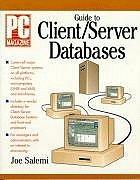Answered step by step
Verified Expert Solution
Question
1 Approved Answer
Before I used xtset, I set the following command to solve the issue repeated time values within panelbut after I solve this problem, the xtreg
Before I used xtset, I set the following command to solve the issue repeated time values within panelbut after I solve this problem, the xtreg fe shows the omitted because of collinearity and xtreg re shows the inefficient Obs, what is the potential problems and how should I operate on STATA? Thanks so much 


bysort panelid year: gen count =N bysort panelid year: count if count>1 drop if count >1 xtset panelid year xtreg Insales Incapital Inlabor Inmaterials, fe vce(cluster panelid) estimates store fe results xtreg Insales Incapital Inlabor Inmaterials, re estimates store re results hausman fe re minimum and maximum values, etc.) to explain the data you have and make necessary comments. (10 marks) Considering total output is measured by Sales, labour input is measured by the total number of employees, capital is measured by capital, and intermediate inputs are measured by materials, a production function can be written as: Sales=ACapitalEmployeesMaterials where A is the total factor productivity (TFP). Based on panel data, taking logarithms on both sides, equation (2) is transformed to ln(Salesit)=ln(A)+ln(Capitalit)+ln(Labourit)+ln(Materialsit)+eit B4) Based on the variable 'panelid', set the dataset in a panel format, then obtain the estimated coefficients in equation (2) by running panel data regression. Comment on your results, including a) a discussion on the capital, labour, and materials elasticities of sales, respectively, and b) a comparison between the panel two-way fixed effect and random effect model. (10 marks) B5) Include Export_dum it as a new variable of interest in equation (2) to test if a firm's performance improves after entering export markets. Based on relevant economic theories or literature, explore the data set to add appropriate control variables to the production equation (2). Run a panel regression and interpret the results. (10 marks) B6) To what extent could we use the estimated coefficient on Export_dum it obtained in B5) for causal inference? Explain. Illustrate an appropriate empirical strategy to make improvements if deemed required. Finally, reestimate the model based on your proposed empirical strategy, compare the results to what you have obtained in B5, and comment on the results. (15 marks) rename year year resate ponelid panelid rentare b2e soe ireaane b2b foretim renane j2 regetine renane j6a gov contrast renae d 2 sales renane die rales_exp tenase it eaployees renane ntia capital renume n2a aaterfals len exp_dian (sales_expie) Een forefig_dum (forelgoio) gen soe dunu(soese) sumarife year papelfd soe forelap reg_tine gov_contract sales sales exp enployees capdtal materials gen Insalesin(sales) ben Incapital-in(capital) ben inlabor-in (emolojees) gen Intaterialsefin(esterials) bysort panelid yeart gen cocit-I I bysort panelid yeari count if countal drop if cecintil xtset panelid year xtreg Insales lincapital Inlaboe Iratepials,fe vee(cluster panelid) estinutes stione fe. reiults xtreg Insales Incapital inlabor Ineaterials, re catinates store re results haviman fe ce Ben inexp_diai- In (exp_dia) per Inas =ln(a) gen Inata - In (ala) xtreg thsales incapital Inlabor Ineaterials Inese_den Ina3 Inala,fe estinates store fe results estimates store re_results ivrea losales Incapital inlabor Inaterjals lnexp dian Inal hola, robust predret referpir depily hat reg Insales Incapital Inlabor lanaterials exp_dun_hat, robust 


Step by Step Solution
There are 3 Steps involved in it
Step: 1

Get Instant Access to Expert-Tailored Solutions
See step-by-step solutions with expert insights and AI powered tools for academic success
Step: 2

Step: 3

Ace Your Homework with AI
Get the answers you need in no time with our AI-driven, step-by-step assistance
Get Started


